4.10.4 G15/G16: Cartesian Coordinate System/Polar Coordinate System
Format:
G15: Cartesian coordinate system
G16: Polar coordinate system
In the axial movement G command, the axis values to be given to the destination can be planned in a cartesian coordinate system or a polar coordinate system and are set by the G15 and G16 commands, respectively. (The power-on preset is G15 cartesian coordinate system. To use polar coordinate system, input G16 command).
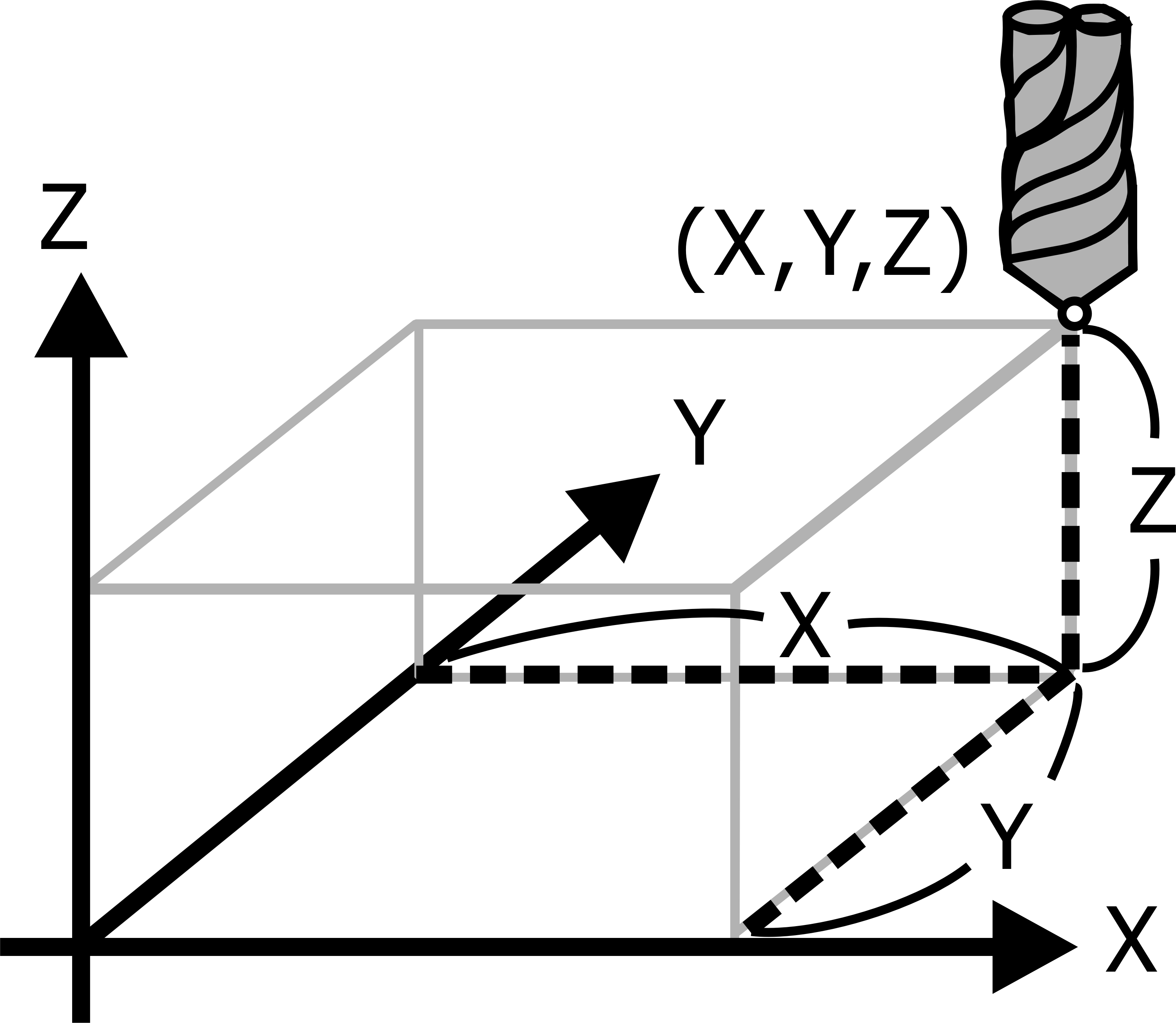
G15: Cartesian Coordinate System
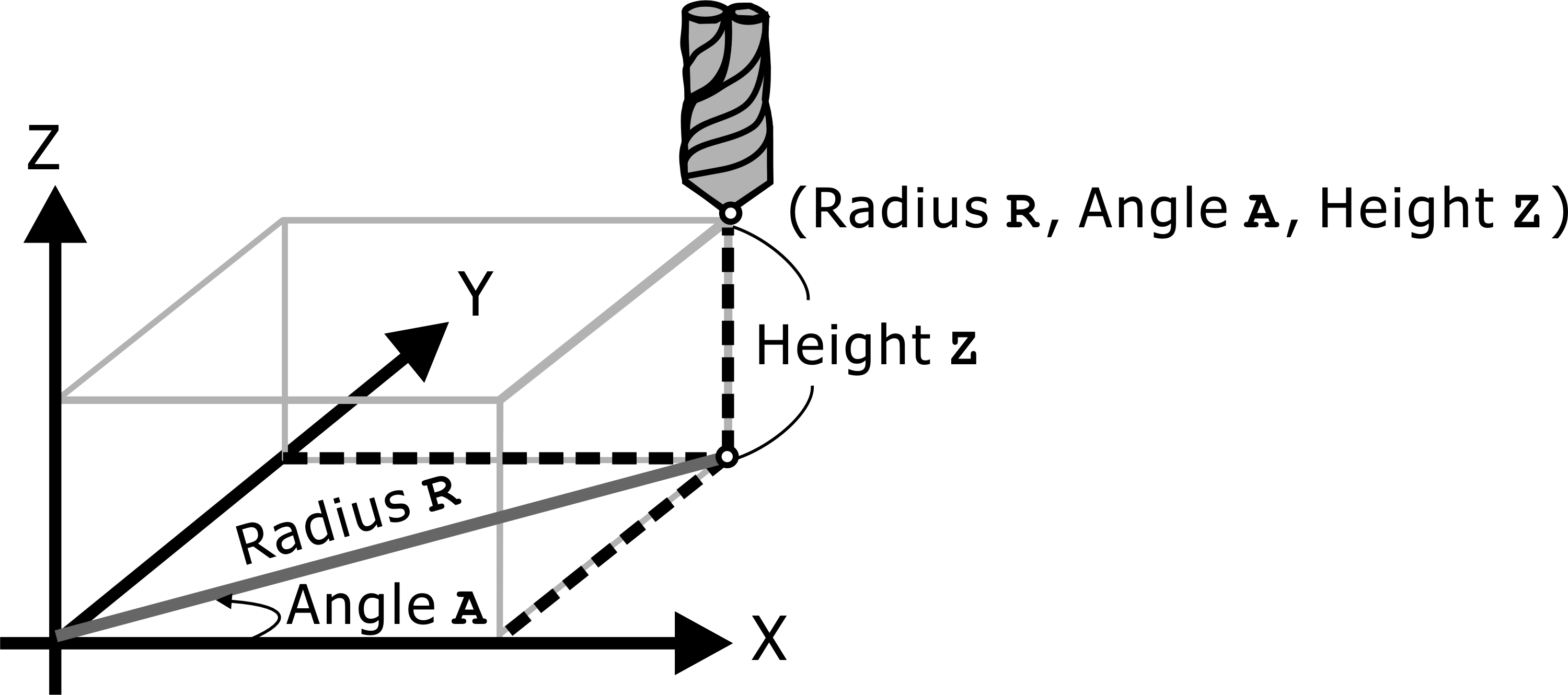
G16: Polar Coordinate System
Note: |
The polar coordinate is closely related to the plane selection, so the plane selection (G17/G18/G19) must be set first. Polar coordinates also use X, Y, and Z as their address codes, but the X, Y, and Z values correspond to polar coordinate radius, angle, and height correspondence tables as shown in the following table:
|
The definition of the positive angle is the counterclockwise angle from the first axis of the plane. (G17: From X axis to Y axis; G18: From Z axis to X axis; G19: From Y axis to Z axis)
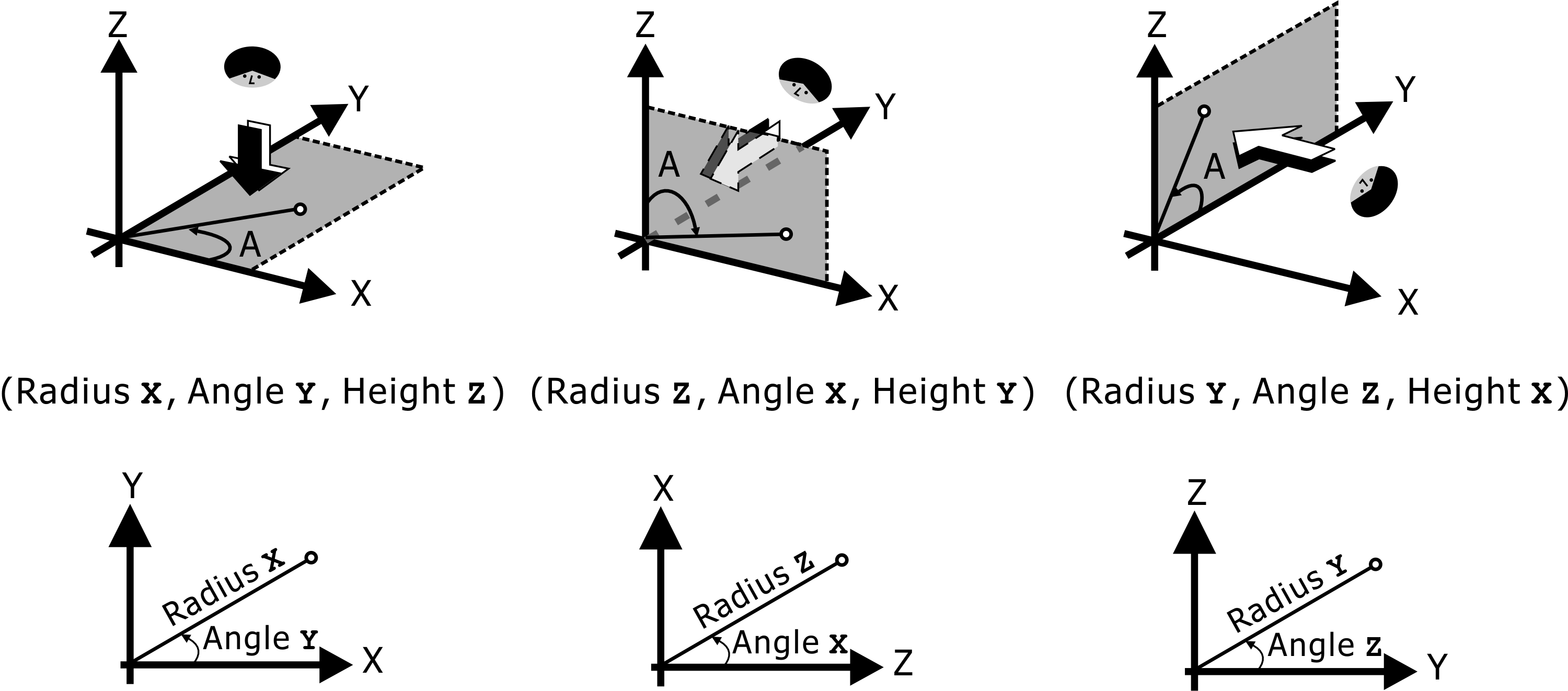
Different Plane Selection in Polar Coordinate System
The G90 and G91 commands are still valid in polar coordinates, the absolute coordinates or the relative increment radius and angle. When just converting to a polar coordinate system, the definitions of radius and angle in G90/G91 have the following possibilities:

Different Combinations of the Radius and Angle in Polar Coordinate System
Note: |
When the angle is just changed to the relative increment, the angle defined by the current position point P1 is used as the starting angle, and then the relative increment angle is added to it; if the current position point is at the origin, It is starting angle is equal to zero. |
Radius and angle in polar coordinates can be defined as absolute coordinates or relative incremental values with G90/G91, respectively. The destination to be shifted will vary depending on the order of the radius or angle set as absolute coordinates or relative incremental values. . It is hereby summarized that such possible combinations are as follows:
1. When the radius is first defined as an absolute coordinate value
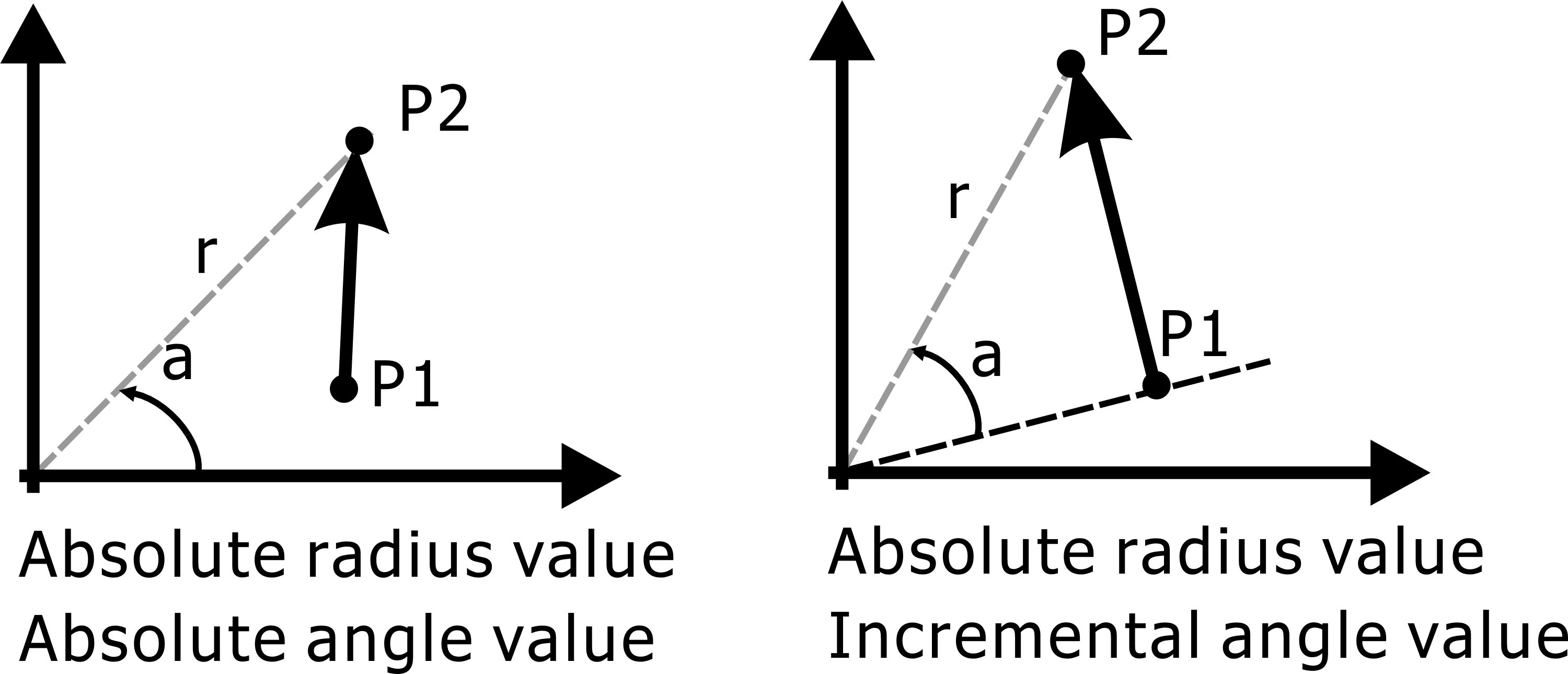
Absolute Radius Value, and Absolute/Incremental Angle Value
2. When the radius is first defined as a relative increment
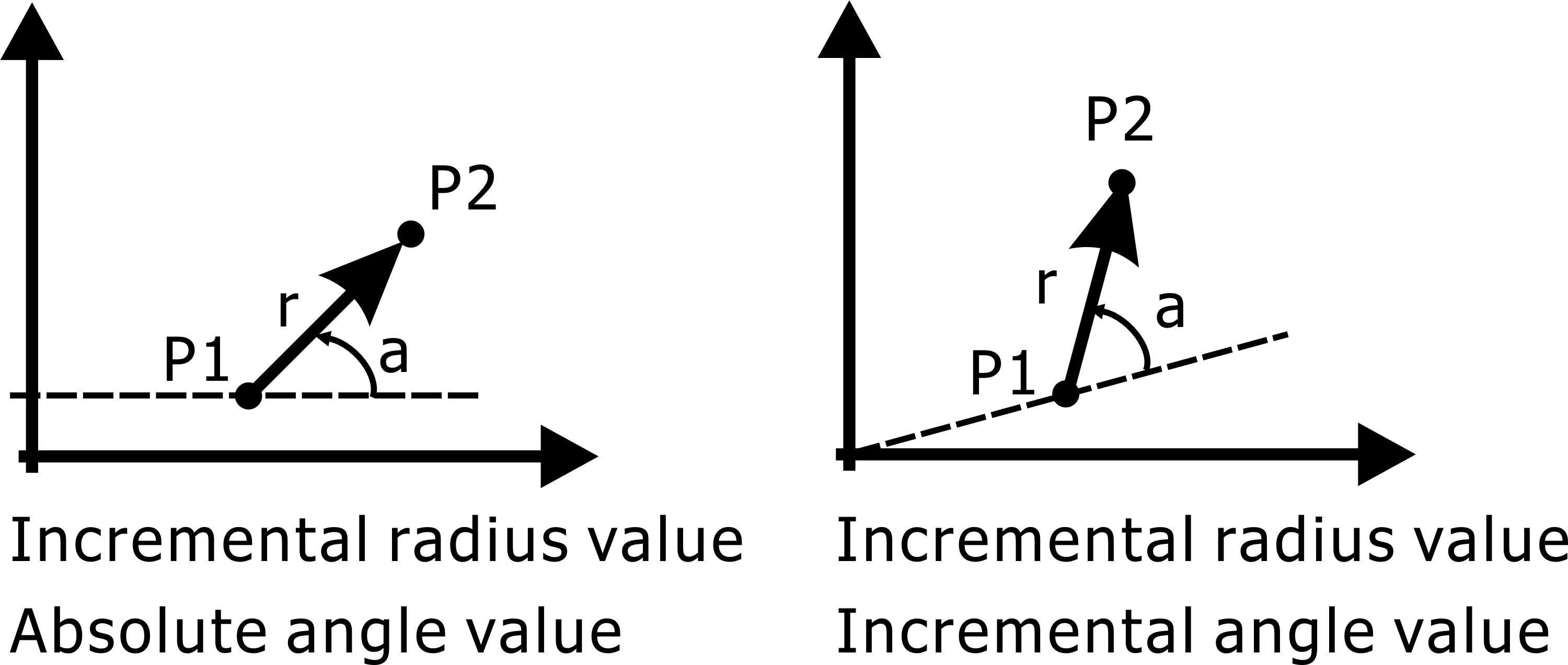
Incremental Radius Value, and Absolute/Incremental Angle Value
The following is a list of other combinations that may be generated when the radius or angle is set to be in the order of absolute coordinates or relative increments:
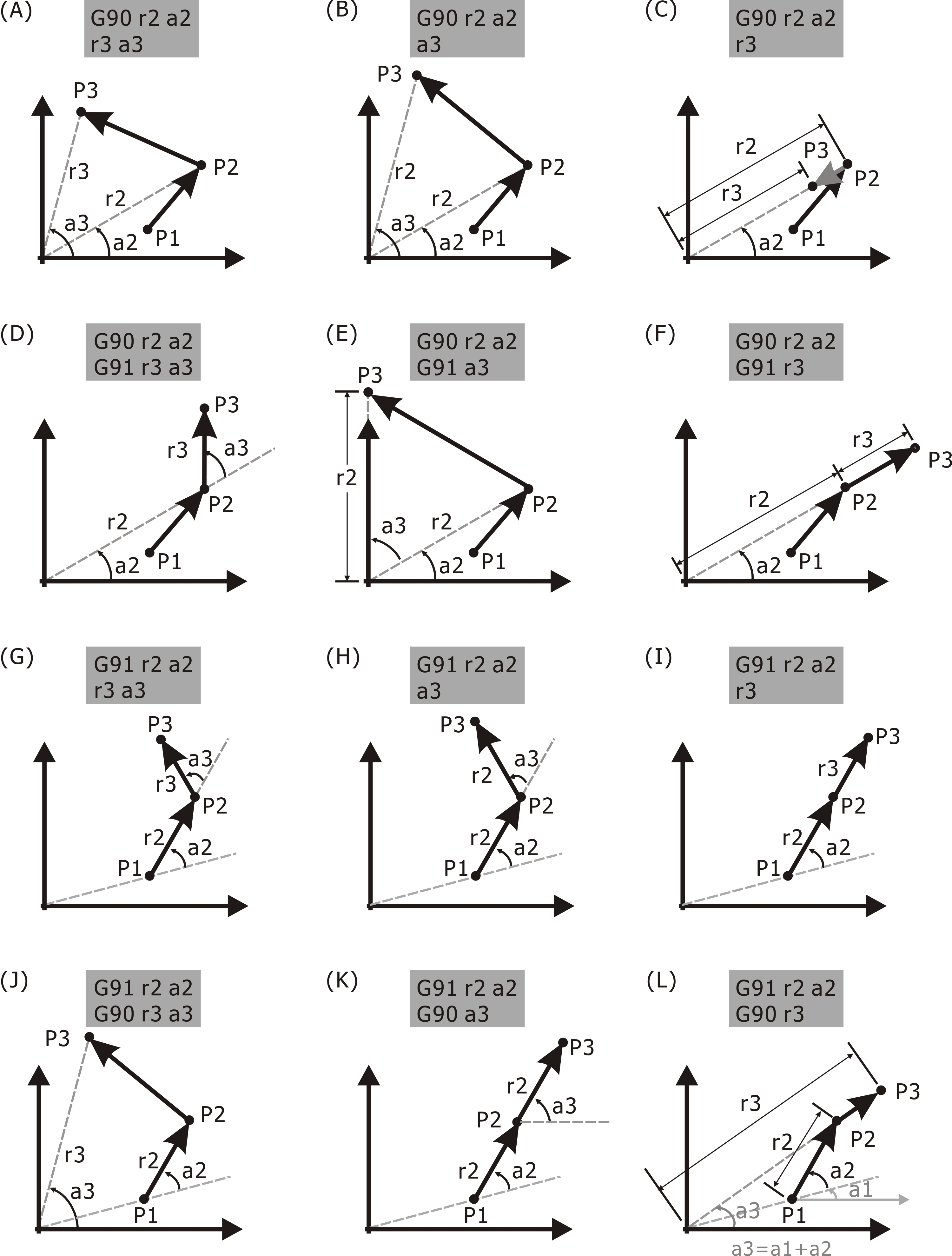
Various combinations of G15/G16
Note: If the current position point P1 is at the origin, then r1=a1=0.